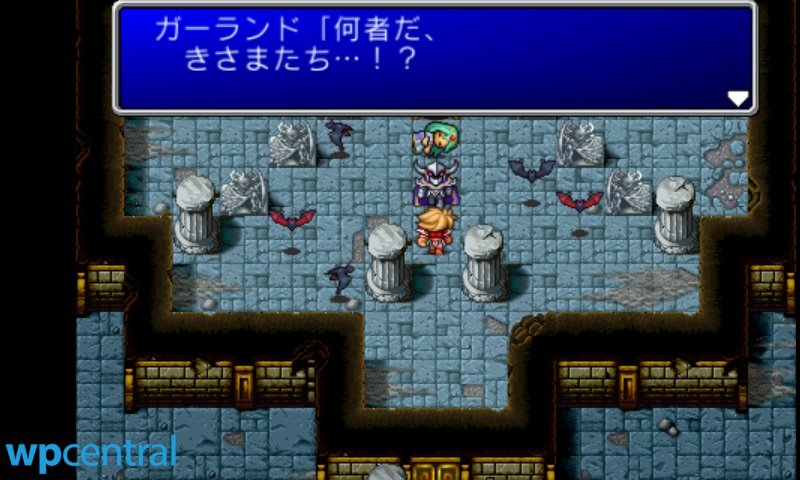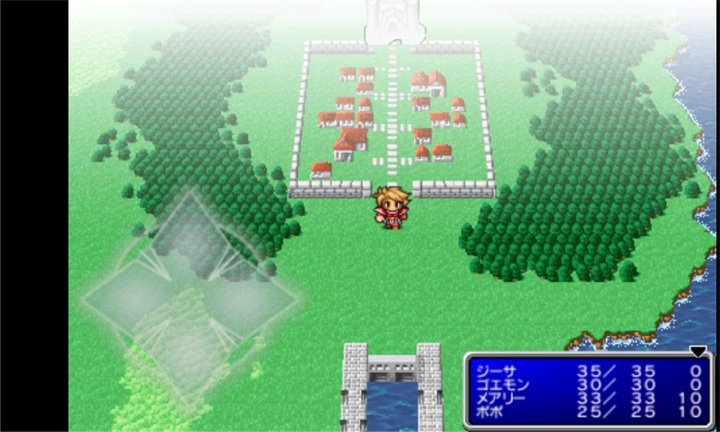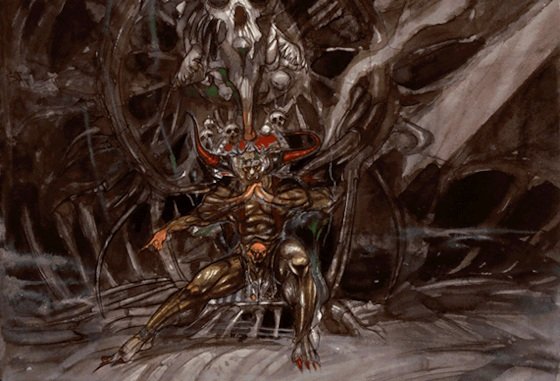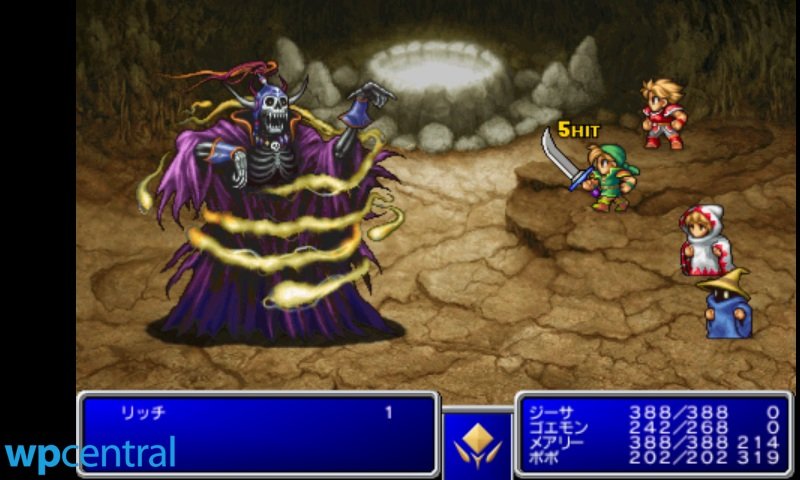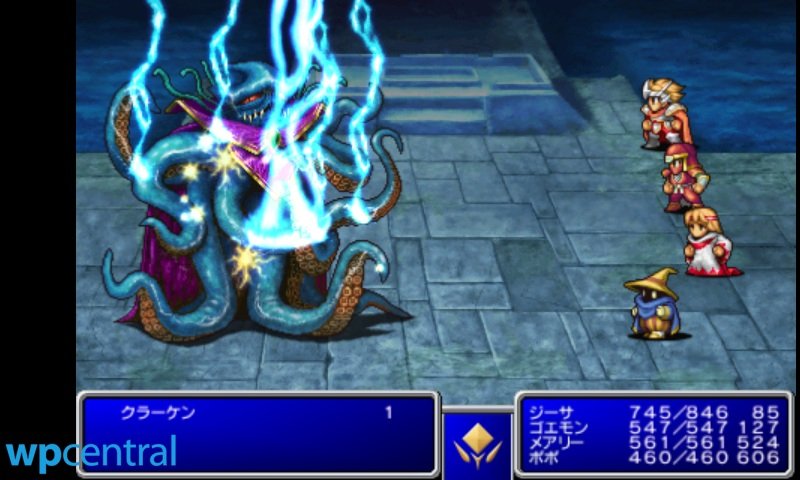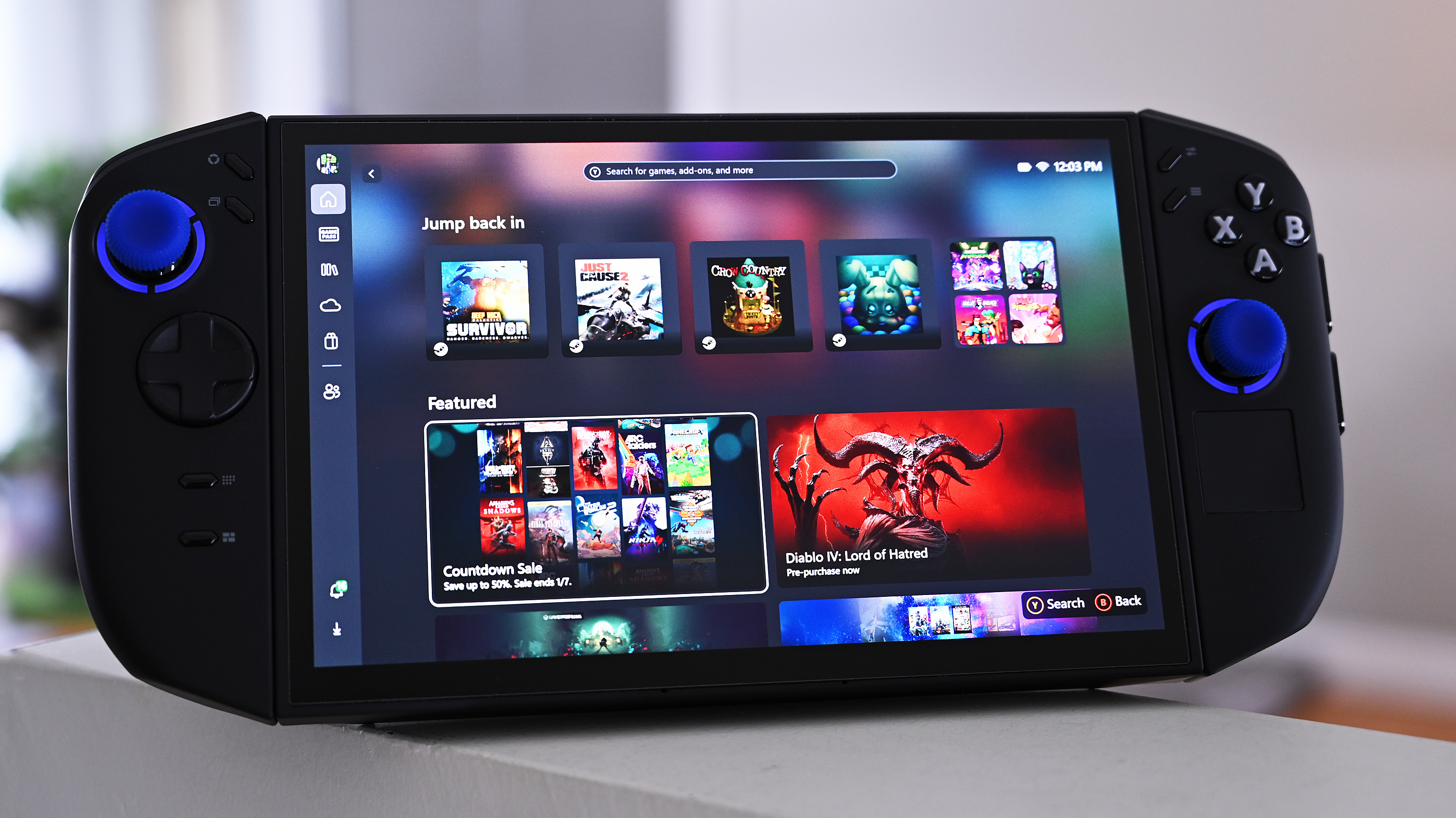Final Fantasy: Xbox Windows Phone Review
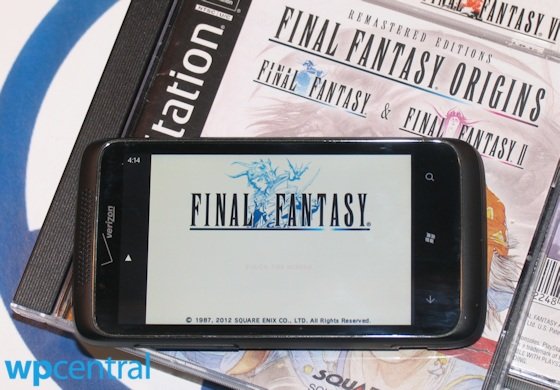
For more than a year, the Xbox Live lineup on Windows Phone languished without the presence of a single traditional RPG. Thankfully Japanese publishing giant Square Enix has finally tossed their hat into the Windows Phone arena with Final Fantasy, a remake of the original NES classic that vaulted their company to stardom. The first Final Fantasy may not have some of the finer trappings of its sequels, but it remains a vast and remarkable adventure that mobile gamers shouldn’t miss.
Head past the break for our extremely detailed review!
The beginnings of an epic
The game runs in multiple languages, not just Japanese.
Fans who’ve never played the 8-bit Final Fantasies (I-III) may be in for a surprise: they’re quite light on story elements. Not until Final Fantasy IV (initially released as Final Fantasy II in the US) came to the Super Nintendo did the series fully come into its own. Still, this Fantasy boasts a premise that will instantly appeal to RPG fans. At the outset, the princess of Cornelia has been kidnapped by Garland, a rogue knight. Four young warriors come to the rescue, each possessing a mysterious crystal. They are the Warriors of Light, who prophecies foretell will thwart four Elemental Fiends and restore balance to the world.
The Warriors of Light are simply ciphers, never uttering a single line of on-screen dialogue. Final Fantasy III would eventually dabble with character personalities, but again, Square didn’t truly flesh out its characters until part IV. Similarly, while each new location presents a goal for players to accomplish, those goals really form the crux of the story. NPCs sometimes provide information on where to go next, but otherwise they don’t say much of consequence or provide side quests like in later RPGs. Clearly, this Fantasy focuses on gameplay and exploration while allowing players to fill in the blanks with their own imaginations.
Class act
Upon creating a new game, players must name each character and assign them one of the following classes: warriors, monks, thieves, black mages, white mages, red mages, and lap dancers. Err, scratch that last one. Each type excels at different things, and it’s essential for the party to include at least one healer (white or red mage). You can safely accept the starting lineup if the choice seems daunting. Later in the adventure, a certain famous dragon will upgrade everyone’s classes, bestowing them with new powers and increased stats.
Not such a small world after all
This FF’s world consists of three sprawling continents dotted with towns, castles, and dungeons. A crystalline-shaped virtual d-pad controls party navigation, while a run button allows for faster movement. When the main character stands near an interactive object or person, tapping anywhere on-screen (besides the d-pad) will initiate interaction. Generally, these controls work pretty well, as RPGs aren’t exactly known for requiring fast reflexes. There are a few exceptions when the controls can’t quite keep up, but they’re mainly relegated to the optional, super-tough Labyrinth of Time.
All the latest news, reviews, and guides for Windows and Xbox diehards.
Monster hunters
Concept art of Chaos, the final boss by Yoshitaka Amano. Courtesy of the Final Fantasy Compendium.
If there’s one thing old-school Japanese RPGs are full of, it’s random battles. Outside of towns and castles, every few steps the party takes will initiate these enemy encounters. Their frequency can become irksome when you’re just trying to get from point A to B (let alone C and D!), but only by slaughtering hordes of monsters can the party gain experience to level up and Gil (gold) to spend on equipment. Actually, many chests contain hordes of Gil later in the game, but early on you’ll need to fight for it.
Good thing the battle system is fun and rewarding, without some of the twists that bog down modern-day JRPGs. During each round of battle, players assign a move to all four characters, and then the enemies get a turn. The action menu at the bottom of the screen offers the following choices: Fight (melee attack), Magic, Guard, Item, and Flee. With these tools at your disposal, you’ll usually come away victorious, though boss battles and certain enemies can provide much steeper challenges.
Some critics have lamented the lack of automatic targeting for attacks. FF requires players to tap the enemy they’d like to target, and then repeat for each character. While simply tapping Fight would certainly make things go along even faster, it honestly doesn’t require too much thought or energy to tap the enemy every turn until it’s defeated. Heck, in the NES original, if two characters had targeted a baddie and the first character killed the target, the second character simply lost his turn. Thankfully, the second character now automatically attacks a different monster.
Bringing a classic into modern times
Speaking of improvements, the graphics and sound are much enhanced as well. Every character and backdrop has been redrawn to match 16-bit standards, with wholly beautiful results. This Final Fantasy basically looks just as lovely as Final Fantasy IV on Super Nintendo, if not more so. Nobuo Uematsu’s iconic soundtrack has been spectacularly remixed too, making for one of the very best soundtracks on Windows Phone, period.
The only presentational hitch to speak of is the game’s screen resolution. When porting the game from iOS to Windows Phone, the developers did not adjust the display to take advantage of Windows Phone’s wider aspect ratio. As a result, a black bar occupies the side of the screen at all times. Wouldn’t a colored border look more attractive? Sure, but black pixels actually eat up a bit less battery life. Besides, the blank portion displays the phone’s clock at all times. Tapping said area pops up battery life and network indicators too – all quite given the game’s length and addictive nature.
Soul of Chaos
The main quest will take most gamers about 15 hours to complete, but your actual completion time is likely to be much longer thank to the inclusion of several bonus dungeons. The four Soul of Chaos dungeons were first introduced in the GameBoy Advance remake Final Fantasy I & II: Dawn of Souls. Spread across the world map, they unlock as each Elemental Fiend bites the dust.
Each of the four dungeons is longer than the one before it, with the final Lifespring Grotto consisting of a whopping 40 floors. Some floors contain the most unusual things: whole new towns and world maps, to name just a few. Each Soul of Chaos dungeon also hosts four bosses taken from Final Fantasy III-VI along with the appropriate boss music from those games. If all that somehow fails to tantalize you, perhaps the Achievement for defeating every Soul of Chaos boss (requiring multiple runs through all but the final dungeon) will do the trick.
Labyrinth of Time
Amazingly, the Labyrinth of Time (created for Final Fantasy: Anniversary Edition on PSP) adds even more playtime. Each run through consists of 8 floors taken from a pool of 30. Every floor features a single unique puzzle or challenge, though they still involve some exploration and monster battling as well. The path you take decides which form of the new ultimate boss Chronodia you’ll face, as well as the unique completion reward. To get the Labyrinth of Time Achievement, you’ll need to face all nine forms. Since each run through the Labyrinth takes 2-4 hours, that’s a whopping 18-36 hour time investment!
How sad then that the Labyrinth is not much fun. See, your path isn’t determined by what exits you take but by an obscure Seal system. Basically, the length of time you spend solving a floor’s challenge determines whether you receive a red or blue seal for that floor. Reaching all of Chronodia’s forms requires some very specific combinations of red and blue seals. You’re often forced to sit around twiddling your thumbs for minutes on end while the counter ticks down in order to get red seals – a truly terrible mechanic, especially in a portable title.
Even worse, players can’t save their progress through the 2-4 hour Labyrinth at all. Resuming the game from the title screen (via a quick save) puts you right back at the dungeon start with none of the experience or items acquired beforehand. Thus the only way to complete a Labyrinth run and not waste your time is by doing it all in one sitting or making sure to keep the game running on your phone (locking the phone is okay). All told, the Labyrinth is a pain that only completionists and Achievement hunters will bother to endure.
Achievements
FF’s Achievements are entirely secret, meaning they can’t be viewed through the game or Xbox.com unless you’ve actually unlocked them. The secrecy is entirely pointless since many of them require optional goals that players would never do on their own. Fear not; we’ve already revealed the full list in our Achievement Guide. The only challenging one I haven’t already discussed here is for completing the game in less than 8 hours. Luckily, a glitch makes that one easy to get without having to rush through the game - see the guide for details.
Overall Impression
Final Fantasy is exactly the game Windows Phone needed. Instead of yet another casual game, it's a lengthy role-playing adventure with serious challenge, beautiful 16-bit caliber visuals, and CD-quality sound. Achievements provide a new incentive to play not only the main game but the copious bonus content as well. The $6.99 price tag doesn’t seem so hefty when you consider this is a full PSP game squeezed onto our phones that offers 40+ hours of playtime. RPG fans, buy FF right away and enjoy this piece of gaming history.
- Final Fantasy – Windows Phone 7 and 8 – 92 MB – $6.99 – Store Link

Paul Acevedo was formerly a Games Editor at Windows Central. A lifelong gamer, he has written about videogames for over 15 years and reviewed over 350 games for our site. Follow him on Twitter @PaulRAcevedo. Don’t hate. Appreciate!
